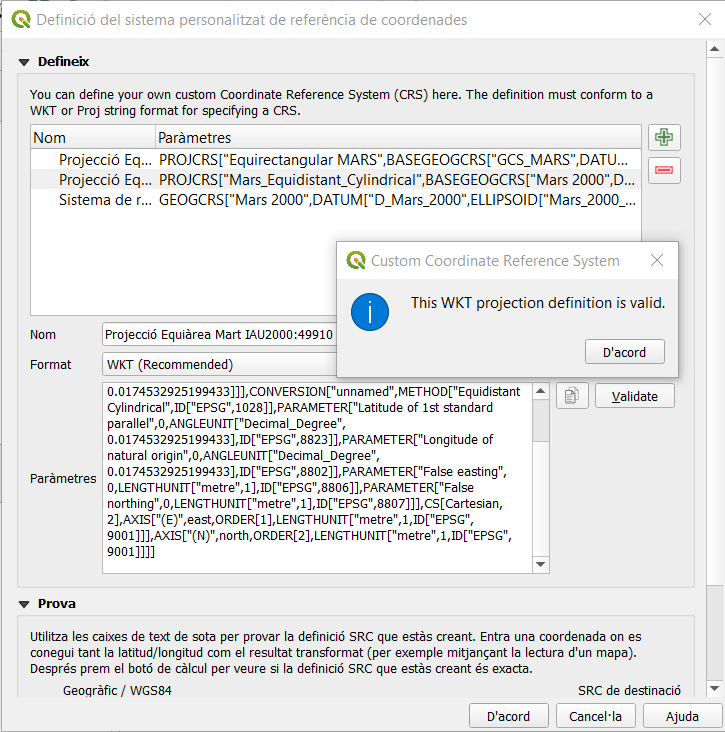I had the same problem. The inconvenient is that QGIS seems that is not able to understand correctly the projection information stored on the .jp2 image files. I recommend you to follow these steps:
(This worked on QGIS 3.10 A Coruña)
- Open an empty QGIS project file.
- Create a new projection by going to "preferences" -> "personalize projection".

- Go to spatialreference.org to search the projections used for Mars.
- The projection usually used by NASA and the USGS for Mars is the IAU2000:49910: Mars Equidistant Cylindrical. We should add this projection on QGIS.
- Click on the IAU2000:49910 and then click on "Well Known Text as HTML".
- Copy that text, which should be:
PROJCS["Mars_Equidistant_Cylindrical", GEOGCS["Mars 2000", DATUM["D_Mars_2000", SPHEROID["Mars_2000_IAU_IAG",3396190.0,169.89444722361179]], PRIMEM["Greenwich",0], UNIT["Decimal_Degree",0.0174532925199433]], PROJECTION["Equidistant_Cylindrical"], PARAMETER["False_Easting",0], PARAMETER["False_Northing",0], PARAMETER["Central_Meridian",0], PARAMETER["Standard_Parallel_1",0], UNIT["Meter",1]]
This code defines the ellipsoid and the projection for Mars.
- Return to QGIS and paste on the opened window and give it an easy name to identify:
 (Remember the format must be: WKT - Welll Known Text)
(Remember the format must be: WKT - Welll Known Text) - Load the ESP_036925_1985_(COLOR/RED) images. Ignore possible errors about projections.
- Now change the project projection to IAU2000:49910.
The images now should be correctly georeferenciatied:

If this doesn't worked for you, I would recommend to update to a newer version of QGIS and try it again.
